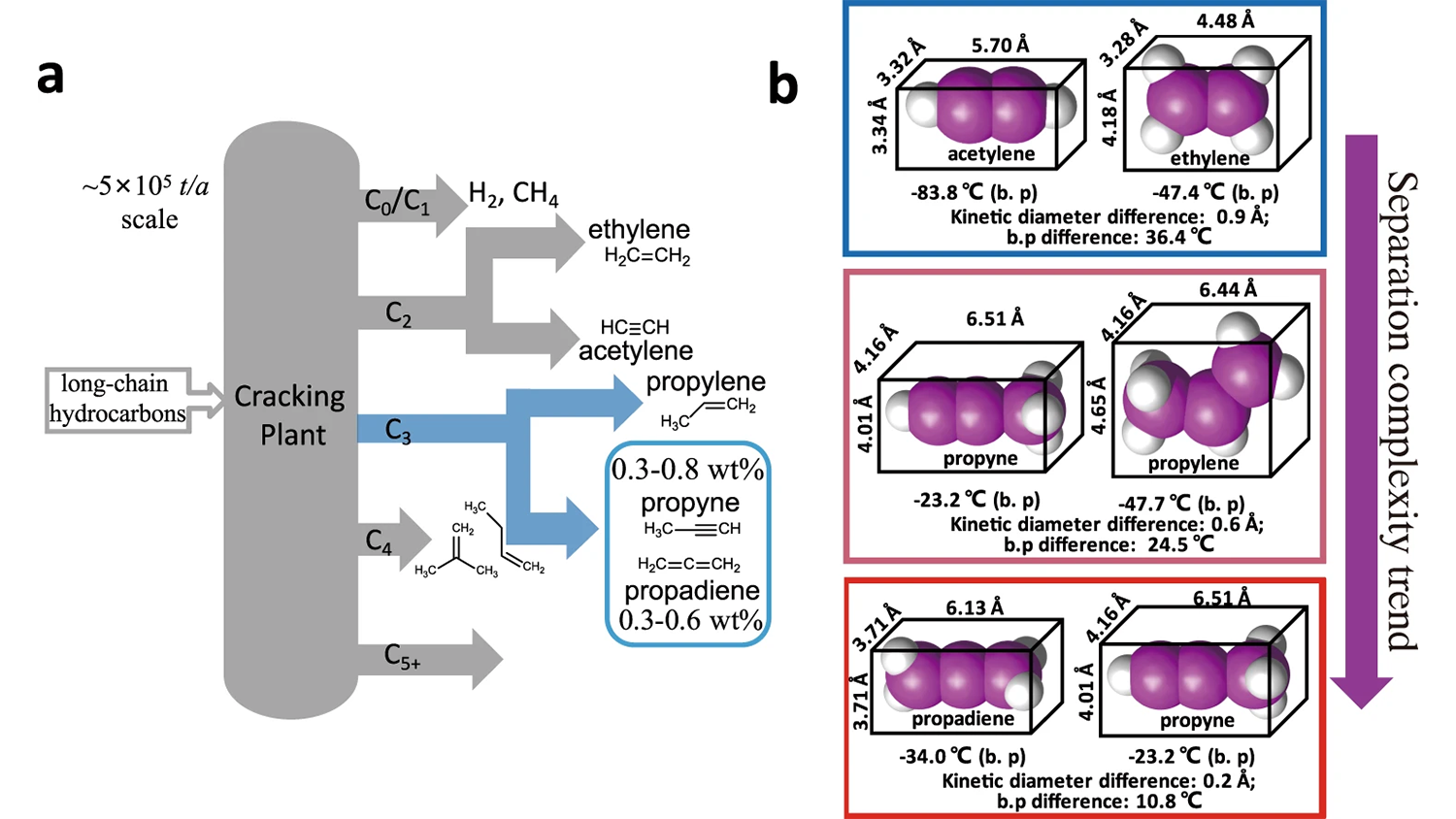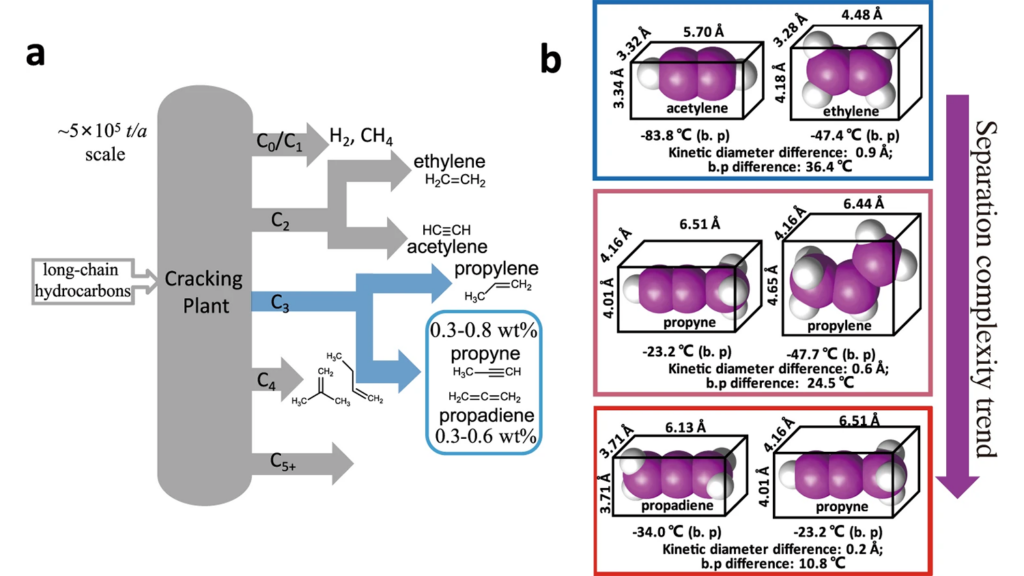Recent Publication
The separation of propadiene from propyne/propadiene mixtures remains challenging. Here, the authors report a sorbent screening protocol and show that metal-organic frameworks (MOFs) with open metal sites and cage-based molecule traps exhibit high performance for propyne/propadiene separation.

Efficient propyne/propadiene separation by microporous crystalline physiadsorbents
Yun-Lei Peng, Ting Wang, Chaonan Jin, Cheng-Hua Deng, Yanming Zhao, Wansheng Liu, Katherine A. Forrest, Rajamani Krishna, Yao Chen, Tony Pham, Brian Space, Peng Cheng, Michael J. Zaworotko & Zhenjie Zhang

Check out the latest research article by the Space research group on materials modeling work for chemically important separation processes published in Nature Communications 12, Article number: 5768 (2021) on October 1, 2021.


